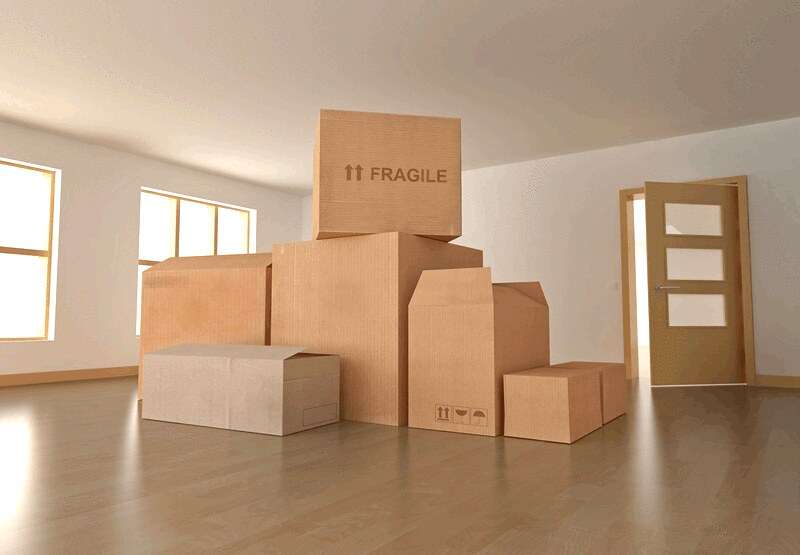Moving house can be a stressful process, and one of the biggest anxiety points is packing. It can be a logistical nightmare when done out of order, often slowing down other important parts of the moving process. The best way to combat it is to base the entire moving process around it. We can do this by creating a plan.
In that natural order, packing is something you do throughout, gradually. We recommend that you begin initiating the process at least two months before the actual date of moving.
Let’s break down the packing for a moving process into phases.
Phase 1 – Bring your house into order
Living spaces come in all shapes and sizes, but while the extent of your work will vary based on this, the fact that you need space when packing does not.
The very start of any plan should begin six-eight weeks before the moving date, if not sooner. The three main objectives here are as follows:
Clean – A messy room is a messy mind, and moving house demands an orderly environment to avoid delays. Clear the floors, the surface tops, and even the drawers of your house. Hoover and dust if needed.
Declutter – Now it’s time to start sorting. Having fewer things you’re taking simplifies and lessens your burden, and the fact of the matter is there’s likely a lot of stuff in your house you don’t want or need. Valueless items in monetary, utility or empathetic terms should be marked for removal.
Stack – Designate a room or a space where you will store the items you wish to give or throw away in an ordered structure. This will give you a good idea of how many of your things you’ll be moving, and it will motivate you to set in motion the dismissal of your unwanted items.
Sell items of value – Items of value that you don’t want to take with you on the move should be sold depending on the difficulty of reselling them. You should begin this stage early to find a buyer in time.
Donate – Items that aren’t worth the effort of re-selling may find a new home. For example, clothes and old tablets or devices can get a new life elsewhere and make a difference to a charity.
Phase 2 – Catalogue your furniture
Five or six weeks into the process, you should have a tidy, orderly house. Everything that can be bagged and gotten rid of, has been. Now it’s time to deal with those that can’t.
Unwanted furniture is heavy, requires several people to move sometimes, and cannot be taken just anywhere. There are several options for disposal to get on as soon as possible.
Garage Sale – Best for those in good neighbourhoods, and a lot of things to get rid of. Hosting a garage sale can involve a bit of publicising and time commitment, but it’s a highly efficient way to get back some money from things you need rid of. You can lower prices over time to all but guarantee things that are semi-desirable can be bought.
Give things away to family and friends – If you just want things gone, giving them out to your daily and friends is possibly the most effective solution. Not only will you build ties, but you’ll be dealing with people you trust to take the items off your hands speedily.
Donation – Donating furniture is different from donating smaller-sized goods because several people and space are usually required. If this is an option, start the process early and make sure to choose a reputable company with good communication. Remember that you are on a time limit.
Waste Management – Waste management companies, or the local authority, will come and collect large items you don’t want. Research will be required on your part to find the right option for you, depending on the items you are wanting to dispose of. You could also find private companies, who usually provide focused, flexible service for the charge they apply.
Phase 3 – Removal companies
Now it is time to contact your removal company and get things moving.
Contact your removal company – Removals should be judged on testimonials, their offers and their guarantees. A strong showing in these three categories signals a company with high consistency and work ethic.
Gather proper packing materials – This step usually comes later, however, with King’s Removal Services this doesn’t require a great deal of work on your account. Kings Removal Services Ltd offers free packing material that can be sent over to you at any time or can be picked up at your convenience.
Phase 4 – Packing
Now we’re finally at the pressure point. This step comes in around three weeks from the date you’ll be moving.
Target low-use rooms – The first boxes that need to be packed are the ones in rooms that you don’t use all that much. This should make it so your daily living isn’t interfered with. When the rooms are bare save for some boxes, you will begin to feel like you’re making real progress. Make sure you label your boxes.
Designate an area for miscellaneous items – Items that don’t belong to a particular room should be put into a room, preferably out of the way, such as your garage.
Take personal care of your most valuable items – Make sure your removers know of your more valuable boxes. Either label or mark them a certain way, or put them out of their reach.
Phase 5 – The Final Week
Pack most of your essentials – The things in your kitchen. Food, cutlery etc, should begin to be packed at this point. It may be worthwhile to keep temporary tools such as paper plates and a handful of cutlery for your final days on the property. You should also begin to pack bedding.
Plan for the final days – By the time of your removal company’s final visit, everything has to be neatly ordered. Please make time before their arrival to organise, leaving you with no leftover messes to account for.
Pack your final essentials – On the last day(s), you will need things immediately for when you move, and these should be stored in your moving day box. This includes toilet rolls, snacks to eat, milk and cleaning materials.

